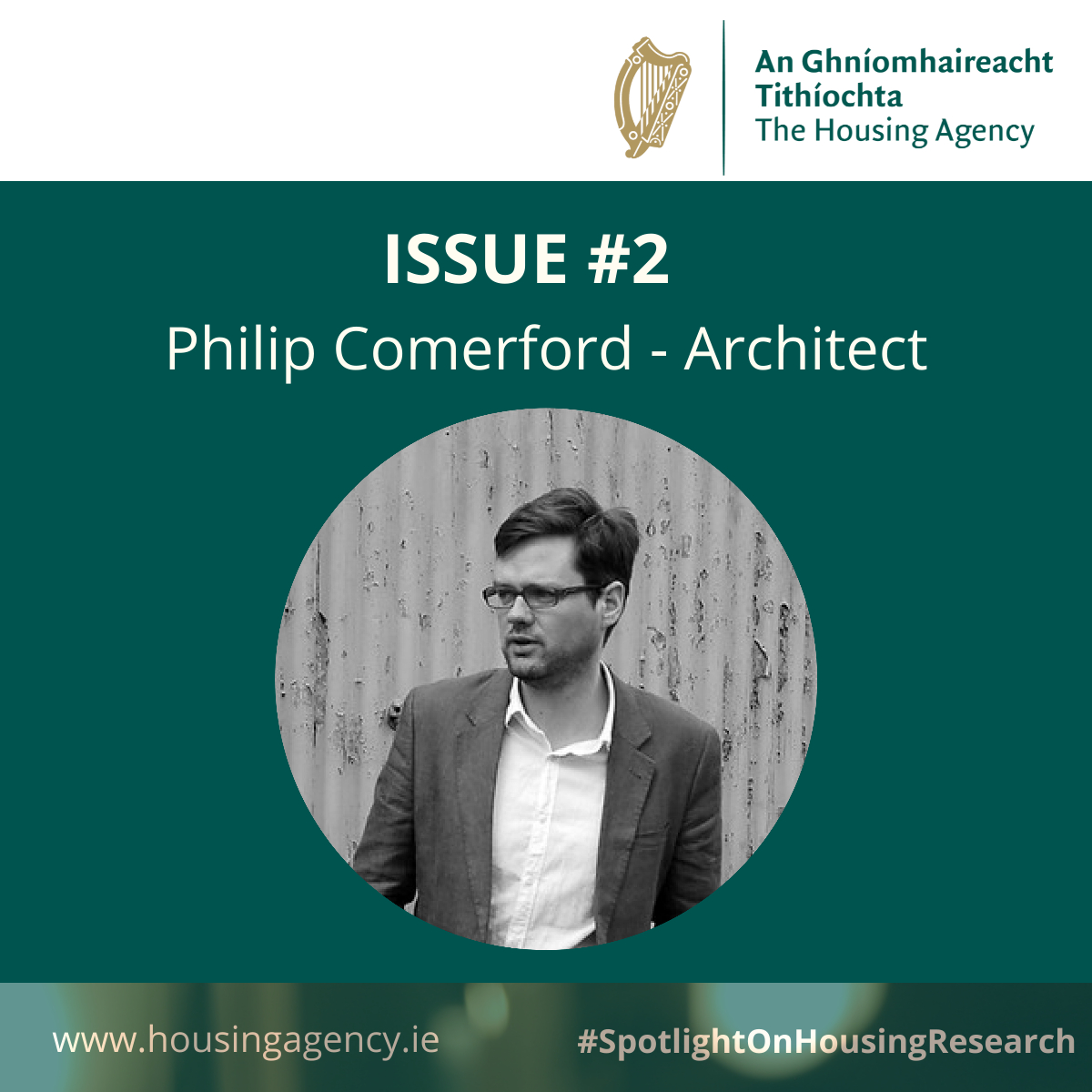November 2023 
Tell me about the research you are working on?
The research that I am currently working on assesses the climate change impacts of different types of housing currently constructed in Ireland today, from low rise houses to high density apartments. The project focuses primarily on the energy required to construct and maintain buildings, known as embodied energy, rather than on the operational energy required to run them. In addition to analysing the buildings themselves, the research looks at the potential of different housing types to create low energy sustainable communities, described primarily in terms of carbon emissions, but also illustrating secondary effects such as reduced car dependency, access to amenities, and the efficient use of land.
Why is this research important?
The research considers how Ireland might meet its housing targets currently set at 33,000 units a year, and still remain within targets set out under the government’s Climate Action Plan. It is clear that under current industry practices, greenhouse gas emission limits will be significantly exceeded, and that in future a better understanding of low-carbon strategies for housing delivery is crucial.
Have you come across any challenges in carrying out this research?
The principal challenge that I have encountered in this research is in gaining access to sufficient information to make a holistic assessment of the housing types. Even in those cases where detailed construction documentation on the buildings themselves can be obtained, other information may be difficult to access and will need to be assumed, such as the building’s services, or its external areas and infrastructure.
How can this research be used to inform housing policy or practice?
As part of the National Planning Framework, the government now promotes strategies of Compact Urban Growth at national and local level. To date however, there is little consensus on what form this should take, and whether the places that will result can even be considered low-carbon or sustainable. In the area of new housing, this research provides a comparative analysis of different types of development, in order to create an evidence base for the sustainability claims of current policy.
What is an interesting piece of housing research you have read recently? Irish or international.
‘Embodied Carbon Primer’, London Energy Transformation Institute (LETI) The term embodied carbon is relatively new, as people tend to be more familiar with operational carbon as listed on a BER certificate. A good introduction to the topic is provided in this primer.
Distinctively Local: http://www.distinctively-local.co.uk This UK publication sets out alternative approaches to place-making for new housing that breaks with traditional suburban models.
Philip Comerford, Architect
Website: https://www.philipcomerford.com/
Contact: info philipcomerford [dot] com (info[at]philipcomerford[dot]com)
philipcomerford [dot] com (info[at]philipcomerford[dot]com)